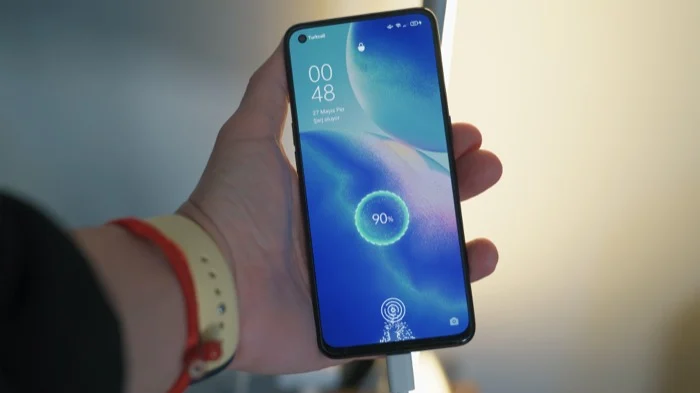In this article, we will provide you with a comprehensive guide on how to check battery health on Android and ensure that your device’s battery lasts longer. As mobile phones become an essential part of our lives, the battery life of our devices is becoming increasingly important. A smartphone with a healthy battery is a must-have for a seamless mobile experience. Over time, the battery life of your Android phone may degrade due to various factors. So, how can you check the battery’s health on Android?

Table of Contents
Why Check Battery Health on Android?
Before we dive into how to check battery health on Android, let’s first understand why it’s essential to do so. A smartphone battery’s capacity will degrade over time, and this is a natural phenomenon. However, several factors can accelerate the battery degradation process, such as overcharging, overheating, or using incompatible chargers. Knowing the battery health of your Android phone can help you take the necessary steps to optimize its performance and extend its lifespan. Checking your device’s battery health also enables you to monitor its charging patterns, detect potential issues, and improve your overall mobile experience.
Read More: How to Check Battery Health and Capacity on Windows 11
How to Check Battery Health on Android
There are several ways to check the battery’s health on Android, and we have listed them below.
Use the Built-in Battery Health Feature
Most Android devices come with a built-in battery health feature that allows you to monitor your battery’s health status. To check your battery health using this feature, follow the steps below:
- Open the Settings app on your Android device.
- Scroll down and select “Battery.”
- Tap “Battery Health.”
- You will now see your battery health status displayed on the screen.
Note that the battery health feature may vary depending on your device’s make and model. Some devices may display the battery health status as a percentage, while others may use different metrics such as “Good,” “Fair,” or “Poor.”
Use Third-Party Apps
There are several third-party apps available on the Google Play Store that can help you check your Android device’s battery health. These apps use advanced algorithms and diagnostic tools to provide you with detailed information about your battery’s condition. Some popular battery health apps include AccuBattery, Ampere, and Battery Doctor. To check your battery health using a third-party app, follow these steps:
- Download and install a battery health app of your choice from the Google Play Store.
- Open the app and allow it to access your device’s battery data.
- Follow the on-screen instructions to check your battery health status.
Note that some battery health apps may require you to pay for certain features or unlock advanced diagnostics.
Use ADB Commands
Advanced users can also use Android Debug Bridge (ADB) commands to check their device’s battery health status. ADB is a powerful tool that allows you to communicate with your Android device from your computer. To check your battery health using ADB commands, follow these steps:
- Enable USB debugging on your Android device.
- Connect your device to your computer using a USB cable.
- Open a command prompt on your computer and type “adb shell dumpsys battery.”
- Press Enter, and you will now see detailed information about your battery health status.
Note that using ADB commands requires some technical knowledge and may void your device’s warranty if not done correctly.
Tips to Improve Battery Health on Android
Now that you know how to check battery health on Android, let’s discuss some tips to improve your device’s battery life. Here are some best practices you can follow:
- Avoid overcharging your device by unplugging it once it reaches a full charge.
- Use only compatible chargers and cables to charge
- Avoid exposing your device to extreme temperatures, as it can damage the battery.
- Close unused apps and disable unnecessary features like GPS, Bluetooth, and Wi-Fi to conserve battery life.
- Reduce your device’s screen brightness and use power-saving mode to reduce battery usage.
- Use battery optimization settings available in your device’s settings to manage battery usage.
- Regularly update your device’s software to ensure it’s optimized for better battery performance.
By following these tips, you can help prolong your Android device’s battery life and ensure it stays healthy.
Conclusion
Checking your Android device’s battery health is essential for maintaining its overall performance and lifespan. There are several ways to check your device’s battery health, including using built-in battery health features, third-party apps, and ADB commands. Additionally, by following best practices such as avoiding overcharging, using compatible chargers, and reducing unnecessary usage, you can improve your device’s battery life and maintain its health.
Read More: Sony’s $200 DualSense Edge Controller have a Surprisingly Small Battery
FAQs
- Can I replace my Android device’s battery?
Yes, you can replace your Android device’s battery if it’s not performing well. However, it’s recommended to get it done by a professional to avoid any damage to your device.
- How often should I check battery health of Android device?
It’s recommended to check battery health OF your Android device periodically, preferably once every few months, to ensure it’s functioning well.
- Is it safe to use third-party apps to check battery health?
Yes, it’s safe to use third-party to check battery health apps from trusted sources. However, make sure to read reviews and check the app’s permissions before downloading.
- Can charge my Android device overnight damage the battery?
Overcharging can damage your Android device’s battery, so it’s recommended to unplug it once it reaches a full charge.
- Does using power-saving mode affect the battery health of my Android device?
No, using power-saving mode can help conserve your device’s battery life and improve its overall health.


